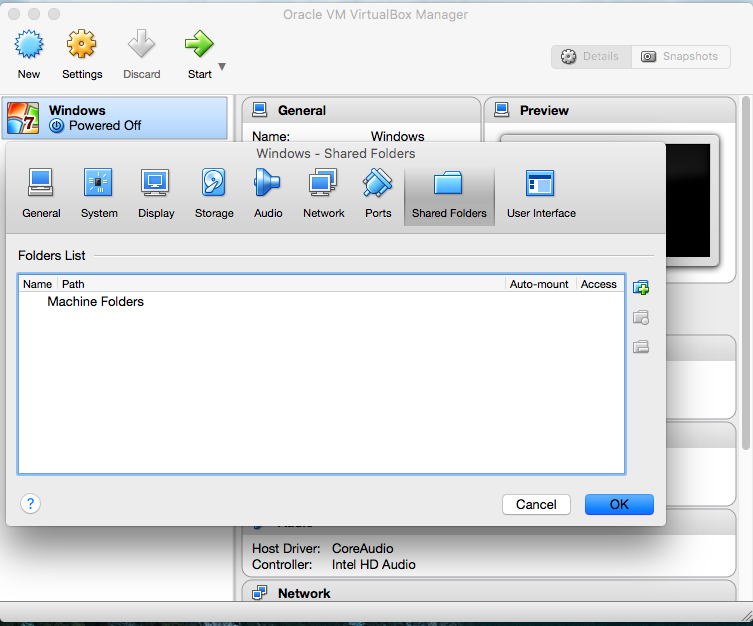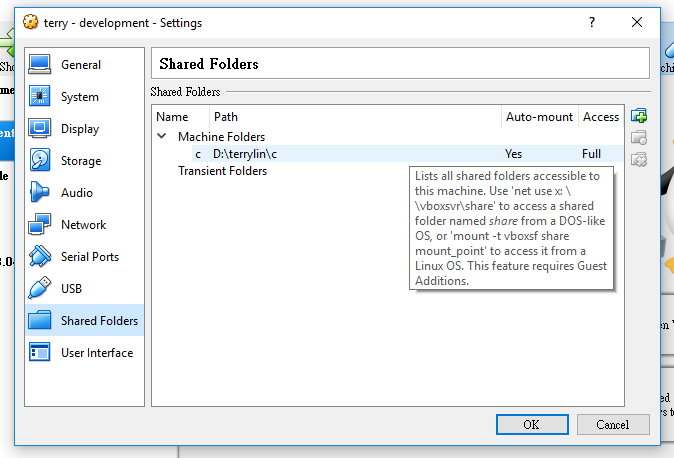

If you enable port forwarding properly the shared folder is also visible for other hosts or virtual hosts in the 192.168.0.0/24 network.

If you attach the guest's network adapter to a NAT network > vboxnatnet01, the shared folder of the guest is visible for all guest hosts attached to the vboxnatnet01 network on the same machine and the host machine itself. If you attach the guest's network adapter to the Host-only network > vboxnet0, the shared folder of the guest is visible for all guest hosts attached to the vboxnet0 network on the same machine and the host machine itself. To access the folder your hosts have to talk afp, smb (or nfs - which has to be set up seperately) of course. If you attach the guest's network adapter to the Bridged network > (Host's) Ethernet adapter and configure the guest's Ethernet adapter with a (unique) IP of the 192.168.0.0/24 network, the shared folder of the guest is visible for all hosts and virtual hosts in the 192.168.0.0/24 network. an Ethernet adapter) has an IP in the network 192.168.0.0/24. Let's assume the host system's only physical network interface (e.g. The protocol can be chosen by hitting the "Options" button.ĭepending on your host system you can also configure a shared folder there.

If the default public user folder is not sufficient, add another folder and determine user permissions. To create a new shared folder, either click the New Folder. Instead share a folder in the OS X/macOS guest system by enabling "File Sharing" in System Preferences > Sharing > File Sharing. From there, you can select the guest Settings and navigate to Shared Folders on the left side menu. The additions can't be installed in a OS X/macOS guest. AFAIK the shared folder feature of VirtualBox only works with the VirtualBox guest additions.


 0 kommentar(er)
0 kommentar(er)
